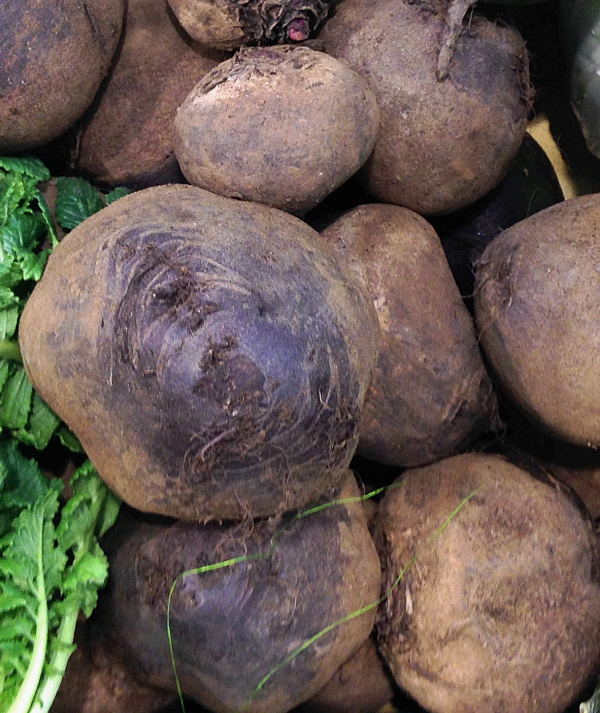Beet powder is made by drying and grinding red beets. This superfood is nutrient-rich, known for its high content of nitrates, fiber, vitamins, and minerals. It is commonly used in cooking to add color and flavor to dishes, as well as for its health benefits, including improved blood circulation and enhanced physical performance.
Nutritional Profile (per 100 grams):
- Calories Approximately 354 kcal.
- Protein About 10 grams.
- Fat About 0.2 grams.
- Carbohydrates About 75 grams.
- Fiber About 8 grams.
- Vitamins and Minerals Rich in potassium, magnesium, and iron. It also contains B vitamins, vitamin C, and antioxidants such as betalains, which give beets their characteristic red color.
Industrial Production Process
The production of beet powder involves processing fresh beets to create a versatile and nutrient-rich powder that is widely used in culinary applications, natural food coloring, and dietary supplements. The process retains the health benefits of beets, such as their high fiber, vitamin, and mineral content.
- Beet selection and cleaning. Beets are carefully selected and cleaned to remove soil and other impurities.
- Cutting. The cleaned beets are cut into uniform pieces to ensure even drying.
- Blanching (optional). The beets may be briefly blanched to preserve color and reduce enzymatic activity that might degrade the product during drying.
- Drying. The cut beets are dried using hot air dryers or ovens until they reach very low moisture content.
- Grinding. The dried beets are then ground into a fine powder.
- Sifting. The powder is sifted to remove any clumps and ensure uniform particle size.
- Packaging. Finally, the beet powder is packaged in airtight containers to maintain freshness and protect it from moisture and oxygen.
Considerations
Beet powder is valued not only for its nutritional value but also for its anti-inflammatory properties and support for detoxification. It is a popular addition to smoothies, juices, and in the preparation of functional foods.
Culinary Use Ideal for naturally coloring foods and drinks without the use of artificial dyes. Adds an earthy and sweet flavor to desserts and savory dishes.
Health Benefits Helps improve blood oxygenation during physical activity and may reduce blood pressure.
Storage Should be stored in an airtight container in a cool, dry place to preserve its nutritional qualities and color.
Beetroot or sugar beet or red beet (Beta vulgaris L.) belongs to the Chenopodiaceae family. It can be sown from March to July. The plant is about 30 cm high. and 15 cm wide. It is used for animal feed, but also in the kitchen.

It grows in temperate climates and supplies about 20% of the world sugar production in the world (1).
The plant is very sensitive to water and needs, for its complete development and correct maturation, some biostimulant supports to speed up growth. Chlorella vulgaris and Scenedesmus quadricauda have demonstrated biological activities compatible with Beta vulgaris in the early stages of growth.
The red beet has a good content of polyphenols, the leaves and the juice of the stem have been shown to reduce high density lipoprotein cholesterol (2).
From sugar beet is obtained pectin that has a beneficial impact on the microbiota in vivo in humans as a beneficial modulation of the intestinal microbiota (3).
Sugar beet studies
References________________________________________________________________________
(1) Biancardi, E.; McGrath, J.M.; Panella, L.W.; Lewellen, R.T.; Stevanato, P. Bradshaw, J., Sugar Beet. In Handbook of Plant Breeding, Tuber and Root Crops; Ed.; Springer: New York, NY, USA, 2010; Volume 4, pp. 173–219
(2) Gomes APO, Ferreira MA, Camargo JM, Araújo MO, Mortoza AS, Mota JF, Coelho ASG, Capitani CD, Coltro WKT, Botelho PB. Organic beet leaves and stalk juice attenuates HDL-C reduction induced by high-fat meal in dyslipidemic patients: A pilot randomized controlled trial. Nutrition. 2019 Mar 16;65:68-73. doi: 10.1016/j.nut.2019.03.004.
(3) An R, Wilms E, Smolinska A, Hermes GDA, Masclee AAM, de Vos P, Schols HA, van Schooten FJ, Smidt H, Jonkers DMAE, Zoetendal EG, Troost FJ. Sugar Beet Pectin Supplementation Did Not Alter Profiles of Fecal Microbiota and Exhaled Breath in Healthy Young Adults and Healthy Elderly. Nutrients. 2019 Sep 12;11(9):2193. doi: 10.3390/nu11092193. PMID: 31547291; PMCID: PMC6770243.
Abstract. Aging is accompanied with increased frailty and comorbidities, which is potentially associated with microbiome perturbations. Dietary fibers could contribute to healthy aging by beneficially impacting gut microbiota and metabolite profiles. We aimed to compare young adults with elderly and investigate the effect of pectin supplementation on fecal microbiota composition, short chain fatty acids (SCFAs), and exhaled volatile organic compounds (VOCs) while using a randomized, double-blind, placebo-controlled parallel design. Fifty-two young adults and 48 elderly consumed 15 g/day sugar beet pectin or maltodextrin for four weeks. Fecal and exhaled breath samples were collected before and after the intervention period. Fecal samples were used for microbiota profiling by 16S rRNA gene amplicon sequencing, and for analysis of SCFAs by gas chromatography (GC). Breath was used for VOC analysis by GC-tof-MS. Young adults and elderly showed similar fecal SCFA and exhaled VOC profiles. Additionally, fecal microbiota profiles were similar, with five genera significantly different in relative abundance. Pectin supplementation did not significantly alter fecal microbiota, SCFA or exhaled VOC profiles in elderly or young adults. In conclusion, aside from some minor differences in microbial composition, healthy elderly and young adults showed comparable fecal microbiota composition and activity, which were not altered by pectin supplementation.
![]() Polvere di barbabietola
Polvere di barbabietola 


